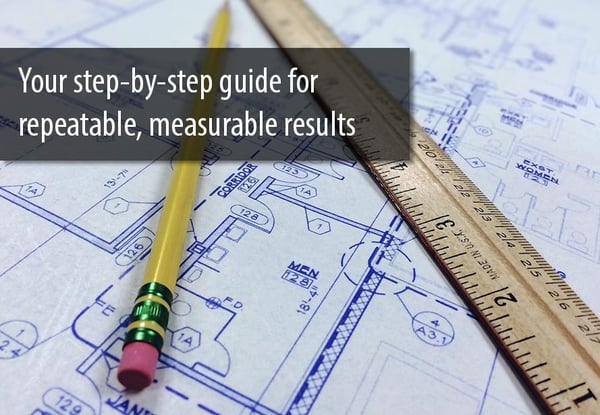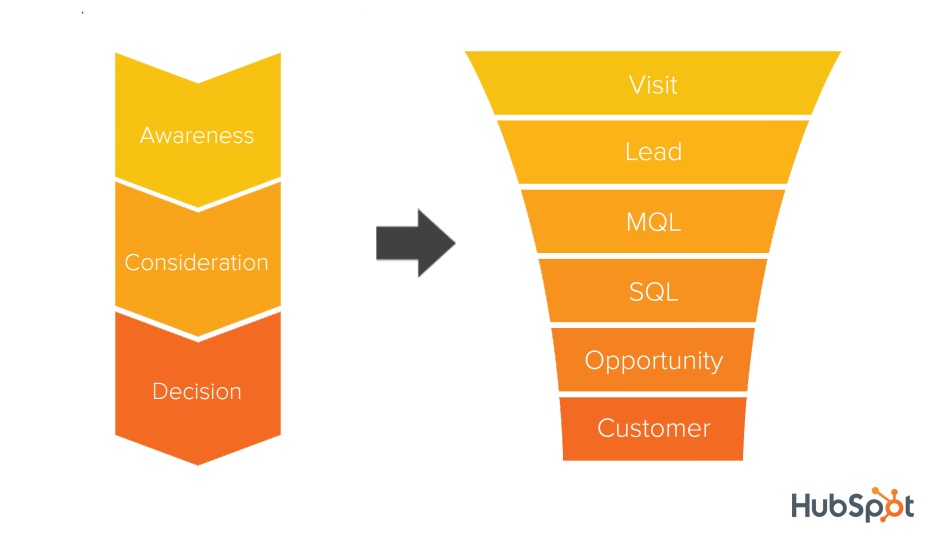5 Steps to Creating a Successful Inbound Marketing Blueprint
 Even though inbound marketing is a proven methodology for generating leads from your website, if you're like most businesses, it's easy to focus primarily on the tactics: blogging, social media, or SEO best practices.
Even though inbound marketing is a proven methodology for generating leads from your website, if you're like most businesses, it's easy to focus primarily on the tactics: blogging, social media, or SEO best practices.
Or maybe you have no idea where to begin.
Unfortunately, without a strategy, you are not likely to reach your lead generation goals, no matter how many actions you take.
In order to succeed with inbound marketing, you need a specific, strategic plan of action (we call it your Inbound Marketing Blueprint) to help you accelerate your lead generation.
What Is an Inbound Marketing Blueprint?
Your Inbound Marketing Blueprint is the foundation for your entire inbound marketing strategy. It is an actionable, step-by-step roadmap detailing exactly which steps to take, in what order, to accelerate your lead generation through an integrated combination of tactics on your website and via the internet.
The Blueprint revolves around the unique needs of your target audience(s) and the online journey they take as they decide whether—or not—to work with you.
Here at Denamico, we begin every project, both with our clients and for our own marketing, by creating a strategy Blueprint. Here are the exact steps we follow (kudos to DoInbound for sharing their approach with us).
The 5 Steps to Creating Your Inbound Marketing Blueprint
Step 1: Assess Your Current Situation
Before you build your strategy, you need to get a lay of the land. You need to know where you're at right now, and where you want to go.
First, determine your business goals. What is your current revenue, and how much would you like your revenue to increase over the next 12 months?
Then determine how well your website is currently generating leads, as well as how many of those leads become clients.
Ask yourself:
- What is the average number of monthly visitors to your website?
- What is the average number of leads per month from your website?
- What is the percentage of qualified leads?
- What is the close rate of your sales team?
- What is the lifetime value of each new customer?
Step 2: Identify Your Ideal Customers
Inbound marketing is meant to be a very focused approach, honing in on your ideal customers. In other words, you are not trying to reach everybody with your message; instead, you want to attract and engage the people who most want and need what you offer.
Step 2 in your Blueprint involves creating Buyer Personas, which are fictional representations of your ideal customers based on a combination of research, insights you've gleaned as a result of working with your customers, demographics information, online behavior, surveys and/or interviews that help you gain a deep understanding of their motivations, concerns, questions, and the decision criteria you must address to win their business.
Once you've clarified your Buyer Personas, next map out the Buyer’s Journey of your ideal customers to get crystal clear about what kinds of messages they need and, even more importantly, when they are most likely to be receptive to your message.
Step 3: Plan Your Marketing Automation Configuration
Many businesses invest in marketing automation (we recommend Hubspot) and then fail to set up the technology in a way that nurtures leads along the entire buyer's journey, reaching only a tiny fraction of leads, while your "competition is figuring out how to get more out of the 99.99% of the market that is still out there," according to Hubspot.
In your Blueprint, plan out what you will need to configure your marketing automation technology to reflect the personalized experience your potential customers expect:
- Add personas
- Create additional persona lists
- Add lifecycle stage forms
- Configure for custom lifecycle stage updates
- Configure lead nurturing workflows and emails
- Configure smart content on site pages
Step 4: Map Your Content to the Buyer's Journey
Now's the time to develop your content plan based on your Buyer Personas, their journey through their decision process, and the topics and information that will answer their questions, concerns, and objections along the way.
Write a list of the premium content offers you will create at each stage (awareness, consideration, and decision), the blog topics, and the lead nurturing email topics that will help engage your ideal prospects through the buyer funnel.

Step 5: Outline Your Inbound Marketing Campaigns
Once you've developed your content plan, you can develop inbound marketing campaign, which are a series of online activities focused on one common goal (typically accelerating lead generation).
Inbound campaigns involve a combination of:
- A premium content offer (ebook/checklist/guide, landing page, thank you page, thank you email, smart CTA)
- A series of blog articles
- Social media promotion
- email(s) to a segment of your database
What's Next?
Your Inbound Marketing Blueprint is just one component of the ultimate inbound marketing framework that leads to repeatable, measurable lead-generating results:

- Develop Your Inbound Marketing Blueprint (create your strategic roadmap designed to systematically sharing answers to prospects’ and customers’ questions through helpful online content)
- Build the Engine (create your inbound marketing funnel designed to educate your ideal customers through each stage of their Buyer’s Journey using foundational content offers, landing pages, conversion forms, and lead nurturing email)
- Optimize Your Website (set up your website with the latest conversion opportunities, search-engine-optimization tactics, user experience design, and back-end processing, designed to engage your ideal customers throughout your sales funnel)
- Run Your Inbound Campaigns (leverage a collection of online tactics united by a common goal, typically to attract visitors to a landing page where they can become a lead)
Could an Inbound Marketing Blueprint Accelerate Your Lead Generation?
Want to learn more about how an Inbound Marketing Blueprint can help you generate more leads? If so, let's schedule a conversation. We'll talk about your business goals and whether we might be a fit to help you reach them.

